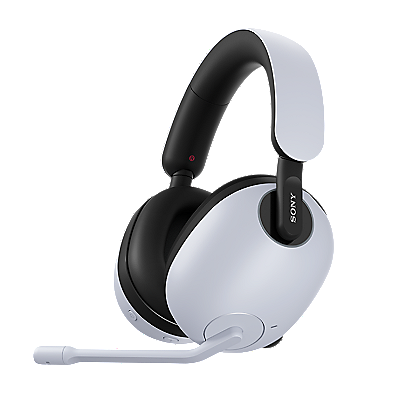Standard lenses
Standard lenses have an angle of view around 47°. The focal length is around 50 mm, or around 35 mm on APS-C cameras.
Through these lenses, which have a natural angle of view and perspective, the field of view is much like our own. This makes them convenient in many situations including street photography, portraits, culinary photography, and more.
Focal length: 39 mm / F-number: 5.6 / Shutter speed: 1/250 sec
Learning photography basics with standard prime lenses
Because the world looks much the same to us through standard lenses, they provide a good angle of view for gaining experience in composing shots. Try shooting all kinds of familiar subjects with shots composed in various ways.
Once you've mastered standard prime lenses, the basics of photography will be second nature to you.
Focal length: 50 mm / F-number: 4.0 / Shutter speed: 1/80 sec
Focal length: 40 mm / F-number: 4.5 / Shutter speed: 1/30 sec
You can improve as a photographer by getting into the habit of sorting your shots afterward. You'll know when shots are nicely balanced and when they're appealing to you.
Finding your favorite shots with lenses that include the standard zoom range
Using zoom lenses that cover standard focal lengths, you can learn the basics of photography in that range while also trying out other focal lengths. By using a high-magnification zoom lens that covers wide-angle and telephoto extremes, you can discover your favorite focal lengths that you tend to use more often. A kit lens that covers the standard range is the SEL1650.
This sample shot at a focal length of 50 mm would also look appealing with a wide-angle background.
Focal length: 50 mm / F-number: 1.8 / Shutter speed: 1/4000 sec
Scenes for trying out lenses
Everyday scenery
Even scenes that seem ordinary may make for impressive photos.
Focal length: 35 mm / F-number: 4.0 / Shutter speed: 1/500 sec
Focal length: 50 mm / F-number: 8.0 / Shutter speed: 1/250 sec
Pets and familiar animals
Shoot from their perspective, to convey their view of the world better.
Focal length: 50 mm / F-number: 2.0 / Shutter speed: 1/80 sec
Food and table settings
Beautiful food presentation in your photos will make your subjects more tempting.
Focal length: 46 mm / F-number: 5.6 / Shutter speed: 1/100 sec
Focal length: 50 mm / F-number: 1.8 / Shutter speed: 1/100 sec
Standard lenses to try
Although a variety of cameras and lenses are available, we're sometimes asked whether NEX-7 or ILCE-6000 lenses can be used with the ILCE-7C or ILCE-7M3.
Both APS-C and full frame cameras and lenses are offered, but as long as the same E-mount is used, compatibility is ensured. See the following page for notes on use.
Are APS-C and full frame cameras and lenses interchangeable? (α E-mount)
Prime lenses
Focal length: 55 mm / F-number: 2.0 / Shutter speed: 1/60 sec
SEL55F18Z
Sonnar T* FE 55mm F1.8 ZA
A high-performance full-frame standard prime lens with a maximum aperture of f/1.8. Offers the signature high contrast and impressive resolution of Carl Zeiss optics. Captures subtle contrasts, from highlights to deep blacks. The large f/1.8 aperture makes this a versatile choice that also produces the bokeh for which full-frame lenses are known. As a fast lens, it's also effective in situations where camera shake or subject blur is more common, such as indoors or at dusk.
Focal length: 50 mm / F-number: 1.8 / Shutter speed: 1/640 sec
SEL50F18
E 50mm F1.8 OSS
A medium-telephoto lens with a focal length corresponding to 75 mm (35 mm-format equivalent), ideal for portrait photography. The beautiful bokeh of this fast (f/1.8 maximum aperture) lens is made possible by a new optical system. With optical image stabilization, it's a powerful ally in handheld shooting under low-light conditions. It also excels at movie recording, thanks to exceptionally smooth and quiet AF using the built-in motor and internal focusing mechanism. And it’s externally refined as well, with a stylish aluminum-alloy exterior.
Zoom lenses
Focal length: 52 mm / F-number: 5.6 / Shutter speed: 1/16 sec
SEL24105G
FE 24-105mm F4 G OSS
A high-magnification zoom lens that covers standard focal lengths and extends well into wide-angle and telephoto lengths, boasting superb closeup performance. A minimum focus distance of 0.38 m and maximum magnification of 0.31× allow close-range shooting of food, flowers, animals, or other small subjects you might encounter on your travels.
Focal length: 55 mm / F-number: 2.8 / Shutter speed: 1/15 sec
SEL1655G
E 16-55mm F2.8 G
A standard zoom lens that covers the common range of 16-55 mm (35 mm-format equivalent: 24-82.5 mm). It is the first APS-C zoom lens to offer a constant f/2.8 maximum aperture. This bright maximum aperture, coupled with its light, compact format, makes the lens a versatile choice for many scenarios, from landscapes and portraits to everyday shots.






















